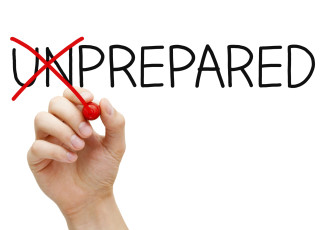Readiness Initiative Expands to Three States
By Ellen Ullman
September 18, 2015
The Southern Regional Education Board is helping high school teachers prepare students for the rigors of higher education.
To help combat the ever-increasing number of high school graduates needing to take developmental courses in college, the Southern Regional Education Board (SREB) decided to take matters into its own hands.
“If you look at ACT Readiness benchmarks, 44 percent of students meet the benchmark in math, and 43 percent meet it for reading. So we created Math Ready and Literacy Ready — college-readiness courses for underprepared students,” says John Squires, the SREB director of High School to College Readiness.
The courses, which are being taught in high schools across Arkansas, Mississippi and North Carolina, emphasize collaborative learning strategies, real-world applications, and other 21st-century skills that will help students be more successful in college.
Training the teachers
SREB doesn’t just ask teachers to download its curriculum; the organization offers free training so that teachers can be sure they are delivering the courses in the best way.
“We trained more than 300 teachers this year in Arkansas and 250 in Mississippi,” says Squires, “and we’ll be providing additional training this fall in those states.” In addition, the organization has trained more than 300 math teachers in North Carolina.
The training typically lasts for three or four days and is done at various locations in each state. In Mississippi, for instance, there were three different trainings in the south, the north and the center of the state.
The training is done by a group of master trainers who have taught the two courses and have learned how to train others. SREB also offers follow-up training online to keep teachers connected. The courses feature a shift in pedagogy, content and approach, so teachers need to commit themselves fully. “You can’t take an underprepared student and do the same thing again, because that hasn’t worked,” Squires says. “You need to try something different, and these courses use a different approach.”
Reaching out at the right time
Squires believes that one of the reasons the program has been adopted in multiple states is that SREB wants to do more than just implement the readiness courses. His big-picture goal is to bring K–12 and higher education together to streamline the process and allow all students to get a head start.
“If you deliver these interventions during the senior year of high school instead of waiting until the student is in college, you’re bringing K–12 and higher education together and making it count,” he says.
SREB is also committed to staying connected with teachers. “We stay in touch and connect them with other teachers who are implementing the courses. That way, they have support, resources and a professional learning community. We’re all in this together.”
Positive results for a brighter future
Last year, Eastern Carolina University, which administers the North Carolina Early Mathematics Placement Testing Program, studied the effect of using SREB’s Math Ready, testing students before and after they completed the course; students who took the course showed an entire level of improvement in college-level preparation.
SREB is looking to work with additional states that are interested in implementing readiness programs in math and literacy during the senior year of high school. SREB can provide training to local schools and districts and will also work with higher education to reduce the number of students needing remediation when entering college. The organization is committed to growing readiness programs across the nation.
States, districts, schools or higher-education institutions interested in increasing readiness should contact John Squires at John.Squires@SREB.org for more information.







